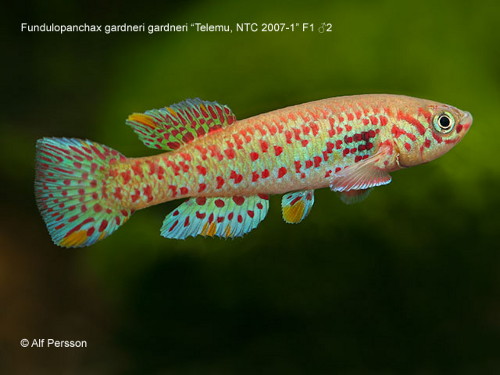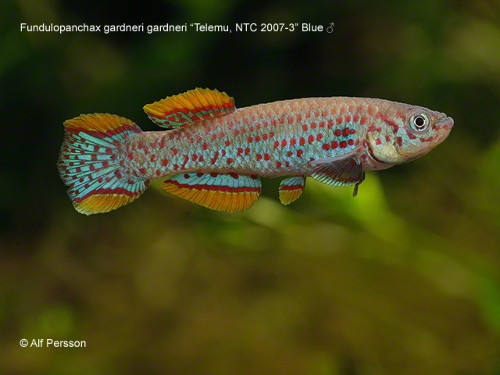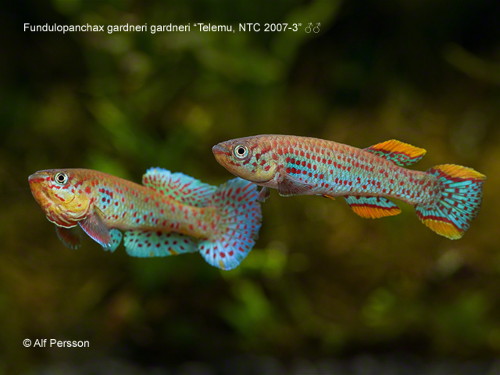Telemu
I have tentatively placed this population in Fp.gardneri clauseni due to geographic distribution.
|
F1 male showing orange spots in unpaired fins. |
F1 male showing only feint areas of orange spots. Note bars in pectorals. |
|
This is a male bred by Alf & Anita Persson clearly showing the typical outer marginal bands of 'clauseni. Only a small percentage of these were produced. |
Alf took a comparison photo of a clear & a banded form. Both are pure Telemu. |
|
Codes
|
NTC
2007/2 NTC 2007/3 |
|
History
|
Collected
by Thibault Cavelier in 2007 & sent to the KCF (France). The fish has been erroneously distributed as Fp.gardneri gardneri |
|
Habitat
|
Telemu
is located 13 km east of Iwo on the road to Ede (Edde) northeast of
Ibadan, Nigeria. This is within the range of
Fp.gardneri clauseni in the Oshun River drainage. Water chemistry - temperature 23°C, pH 6·8 GH 8. Sympatric sp. Hepsetus odoe, Nannaethiops unifasciatus, Brycinus longipinnis, Barb sp. Biotope photo (in publications) shows a small pool with muddy water but it's unknown if this was stirred up during collection. |
|
Images
|
Olivier Buisson (in DKG & KCF Newsletters), Alf Persson (by personal correspondance). |
|
Traits
|
No outer marginal band in unpaired fins in some specimens particularly those introduced from the wild but bands later surfaced. Anal has the pattern typically found in Fp.gardneri gardneri populations in clear spotted individual males.. |
|
Variability
|
Could be high regarding bars & spots in unpaired fins. It would be interesting to collect in the surrounding areas. |
|
Notes
|
It
will be interesting to see if anyone carries out a DNA analysis of these
populations. It has no outer marginal bands in the unpaired fins at
least in published photos of wild collected specimens. The anal is reminiscent
of Fp.gardneri gardneri populations
which is presumably where this name was applied originally. Telemu is
well outside the range & drainage of Fp.gardneri
gardneri & is also seperated by the Niger River. It is interesting that within a few kms to the north west collection NTC 2007/2 is recorded which has bands in the outer margins of unpaired fins. First breeding results in captivity seem to indicate a mixing (probably through flooding in natural habitat). Personally I would consider the banded gene to be dominant so careful selective breeding should be practiced to keep the spotted form pure. Selecting females however would be interesting but no doubt their are certain differences.It would be interesting to show here photos of females which I find sadly neglected in many publications. |



